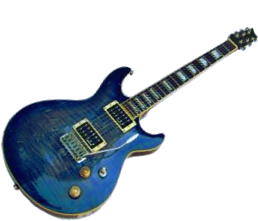
Only the content within the dashed purple border will be printed!
Follow this link to return to the full-featured chart (with bells and whistles), suitable for displaying on the screen.
You can start the printing process by pressing the button below. If you do not see the button, your browser probably does not support JavaScript; in this case, you can download the PDF file with this chart and print it instead.

I recommend starting with the following open chords to build a solid foundation for your guitar playing:

Fingering: place your ring finger on the 3rd fret of the A string (5th string), middle finger on the 2nd fret of the D string (4th string), and index finger on the 1st fret of the B string (2nd string). Strum from the A string down.
Quick tip: practice switching to and from C major to G major to build your transition skills.

Fingering: use your index, middle, and ring fingers to press down the 2nd fret of the D, G, and B strings (4th, 3rd, and 2nd strings, respectively). Strum from the A string down.
Variations: A7 can be played by lifting your ring finger off the G string.

Fingering: place your middle finger on the 3rd fret of the low E string (6th string), index finger on the 2nd fret of the A string (5th string), and your pinky should be on the 3rd fret of the high E string (1st string). Strum all strings.

Fingering: place your index finger on the 1st fret of the G string (3rd string), middle finger on the 2nd fret of the A string (5th string), and ring finger on the 2nd fret of the D string (4th string). Strum all strings.
(This chord has a deep bass sound.)

Fingering: place your index finger on the 2nd fret of the G string (3rd string), middle finger on the 2nd fret of the high E string (1st string), and ring finger on the 3rd fret of the B string (2nd string). Strum from the D string down.

Fingering: place your index finger on the 1st fret of the B string (2nd string), middle finger on the 2nd fret of the D string (4th string), and ring finger on the 2nd fret of the G string (3rd string). Strum from the A string down.

Fingering: place your middle finger on the 2nd fret of the A string (5th string) and your ring finger on the 2nd fret of the D string (4th string). Strum all strings.
(Two-finger chord, making it one of the easiest to play.)

Fingering: place your index finger on the 1st fret of the high E string (1st string), middle finger should be on the 2nd fret of the G string (3rd string), and your pinky on the 3rd fret of the B string (2nd string). Strum from the D string down.
Mastering chord transitions is key to fluid guitar playing. The goal is to move between chords smoothly and efficiently, minimizing unnecessary hand movements and maintaining a clean, uninterrupted sound.
Keep your fingers close to the fretboard and only move the fingers you need to.
Identify fingers that can stay in place between chords (e.g., C → Am shares positions).
Practice strumming immediately after the chord change. Use a downstroke on beat 1 to keep your timing in check.
As you get more comfortable, try to look at the fretboard less.
If you feel like you need some guidelines for organizing your learning process, here are some structured routines using only open chords to build skill, timing, and repertoire.
Single-chord stamina → two-chord repeats → three/four chord progressions.